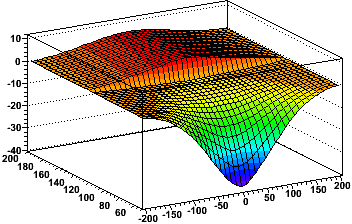- genevb's home page
- Posts
- 2025
- 2024
- 2023
- 2022
- September (1)
- 2021
- 2020
- 2019
- December (1)
- October (4)
- September (2)
- August (6)
- July (1)
- June (2)
- May (4)
- April (2)
- March (3)
- February (3)
- 2018
- 2017
- December (1)
- October (3)
- September (1)
- August (1)
- July (2)
- June (2)
- April (2)
- March (2)
- February (1)
- 2016
- November (2)
- September (1)
- August (2)
- July (1)
- June (2)
- May (2)
- April (1)
- March (5)
- February (2)
- January (1)
- 2015
- December (1)
- October (1)
- September (2)
- June (1)
- May (2)
- April (2)
- March (3)
- February (1)
- January (3)
- 2014
- December (2)
- October (2)
- September (2)
- August (3)
- July (2)
- June (2)
- May (2)
- April (9)
- March (2)
- February (2)
- January (1)
- 2013
- December (5)
- October (3)
- September (3)
- August (1)
- July (1)
- May (4)
- April (4)
- March (7)
- February (1)
- January (2)
- 2012
- December (2)
- November (6)
- October (2)
- September (3)
- August (7)
- July (2)
- June (1)
- May (3)
- April (1)
- March (2)
- February (1)
- 2011
- November (1)
- October (1)
- September (4)
- August (2)
- July (4)
- June (3)
- May (4)
- April (9)
- March (5)
- February (6)
- January (3)
- 2010
- December (3)
- November (6)
- October (3)
- September (1)
- August (5)
- July (1)
- June (4)
- May (1)
- April (2)
- March (2)
- February (4)
- January (2)
- 2009
- November (1)
- October (2)
- September (6)
- August (4)
- July (4)
- June (3)
- May (5)
- April (5)
- March (3)
- February (1)
- 2008
- 2005
- October (1)
- My blog
- Post new blog entry
- All blogs
Distortions in pp510 present and future
The first plot is the actual reconstructed positions of hits using padrow 1 from three neighboring sectors (11,12,1) in y vs. x [cm]. The colors represent z, such that red is near the endcap and blue is at the central membrane.

What you see is our distortion corrections taking hits reconstructed ON padrow 1 and moving them off to account for the distortions. The red line is essentially the position of padrow 1, and blue with respect to the red is showing how big our distortions are. What you can see is distortions as large as 5.3 cm by looking at the ends of the padrows! That's mighty big, and I will be amazed if we get the distortion corrections anywhere near "right" for this year's data.
I have chosen for this demonstration the highest luminosity good TPC-included run we recorded during Run 12 pp510 (run 13099025), and the distortions are calculated using our calibration of SC&GL from a few months ago, which we believe to be at least a little bit wrong. The value of TPC-volume-averaged <ρSC/ε0>, which we call "SpaceCharge", is about 0.12 V/cm2.
Also of interest are the latest RHIC projections for pp510 luminosities which the machine can achieve...
2011: 145 x 1030 /cm2 /sec (actual)
2012: 165 x 1030 /cm2 /sec (actual)
2013: 269 x 1030 /cm2 /sec (estimate)
2014: 389 ...
2015: 482 ...
2016: 825 ...
2017: 1010 ...
One may be able to read from this that we can expect ~60% larger distortions next Run (i.e. up to 8.5 cm), and a factor of x6 larger by 2017! I'm not sure the distortion correction code works correctly any more at such large scales (perturbative approaches we've used won't apply), but I have included the azimuthal (first) and radial (second) distortion maps calculated using SC = 0.7 V/cm2 (all axes in [cm]).


We foretold years ago of such big distortions, and the future of the TPC in high luminosities has long been a concern. I think I can confidently say that the inner padrows will not be useful for anything but tracks near the endcaps, as distortions will be so large near the middle of the TPC that electrons liberated on tracks will distort from near the inner field cage to about padrow 9 or 10 by the time they drift to the endcap. On the bright side, we get tracking at smaller radii (yes, that's meant to be humorous), but then we start losing padrows.
I think this is yet another argument to turn off the inner sectors as we amp up the luminosity. The distortions will be too large to have any hope of getting right. Alternatively, we might prefer to tell RHIC that we don't want those luminosities.
-Gene
- genevb's blog
- Login or register to post comments
